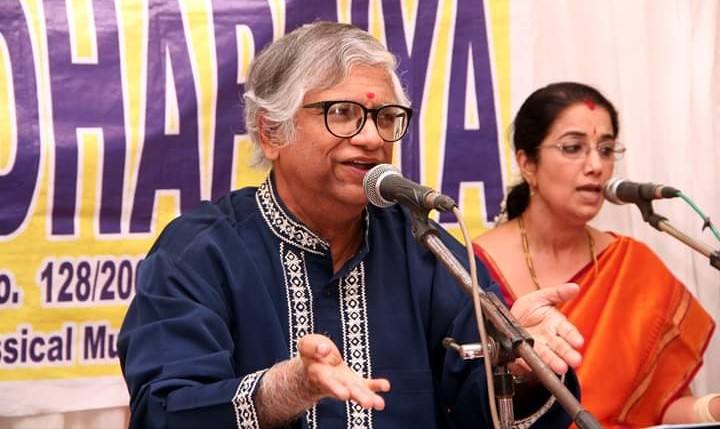Learning Sangeetam by Natural Osmosis Method
Sangeetha Vidwan Prof. Venkateswaran Somasundram talks about the natural osmosis method of Indian classical music training.
Drawing on his own training from a very young age Prof. Venkateswaran, 64, who performs all over the world, gives these vital tips for parents of young music students.
“Dear Parents in music, an important quality that is required for a talented child to develop into a good musician is ‘listening comprehension’ (kehlvi gnanam or “shravanam”).
You would know that “listening comprehension” is also an important component for a person to learn and become proficient in languages, hence the “mother tongue” (thaai mozhi) aspect is a very important element of effective language learning.
In like-minded fashion, this approach is required for learning, absorbing, retaining, producing and mastering music.
Today’s children, and their parents, are fortunate in this sense as technology has made listening comprehension a lot easier than what it was about four decades ago, when I was a music student in India learning from my revered gurujis under the “gurukula system.”
It is important for talented children to be always surrounded by good music.
Only then can they absorb, through the “natural osmosis method,” the finer nuances of music, rhythm and melody and request their guru to guide them through the learning process.
This absorption process will mostly be at a subconscious level, i.e. when students are not consciously practising music, but when they are doing other activities of life, e.g. getting ready to go to school, having their meals, etc.
The music, when played through speakers, will enter their subconscious level, and eventually be entrenched there. It is this “retained subconscious level” of music that will eventually be revealed when they perform on stage.
Towards this objective, You Tube will be able to give you a wealth of materials on good classical music, be it vocal (male/female), instrumental, etc.
You Tube video materials are easily, and freely, available, for anyone to listen, and learn from.
How do you start this process?
You can start this process by taking a raga-based approach. Take for instance the Raga Mohanam.
Go to You Tube, search for Raga Mohanam, and you will find a wealth of video materials there.
Consult the guru and ask him/her to recommend good video materials containing krithis in the Raga Mohanam that could be downloaded, saved in your computers and played for the children to listen.
I can give you a simple suggestion: You could download “Ninnukori (Varnam),” “Mayil Vahana Valli Manamohana”, “Gopika Manoharam”, “Raa Raa Raajeeva Lochana Rama”, “Mohana Rama”, “Evarura”, “Kapali”, etc. for a start.
Put the materials on “continuous play” and let the children listen to Raga Mohanam, say for a week.
By then, the ascending and descending scales (arohanam-avarohanam), characteristics (raga lakshana), qualities, movements, etc. of the Raga Mohanam would have become very familiar to them.
This is the “natural osmosis” approach. It is best if this approach could be aligned with the guru’s teaching/krithi schedule so that the learning process will be more efficient, effective and all-encompassing.
In like-minded manner, move on to another raga, say Sankarabharanam, Kambodhi, Kamas, etc. and repeat the process.
I would like to think that in about one year or so, the children would have become fairly proficient and knowledgeable in about 30 to 40 ragas.
To a large extent, this “natural osmosis” approach using You Tube materials will be able to close the “opportunity gap” that exists in Malaysia for students/rasikas to regularly listen to “live” concerts.
For further information, advice and guidance, please consult the guru,”
Venkateswaran started his Carnatic music training under his recently demised mother Sulochana Somasundaram.
Sulochana and her sister, Sharadhambal formed the Nellai Sisters, a popular singing duo in Malaysia and Singapore.
Venkatesan’s other gurus were Sangita Kalanidhi Alathur Srinivasa Iyer, Sangita Kalanidhi Prof. Dr. S. Ramanathan, violin maestro Padma Shri Dr. Kunnakudi Vaidyanathan and violin Vidwan Thinniam S. Krishnamurthy.


Very nicely written article on the ‘osmosis’ method for learning music.